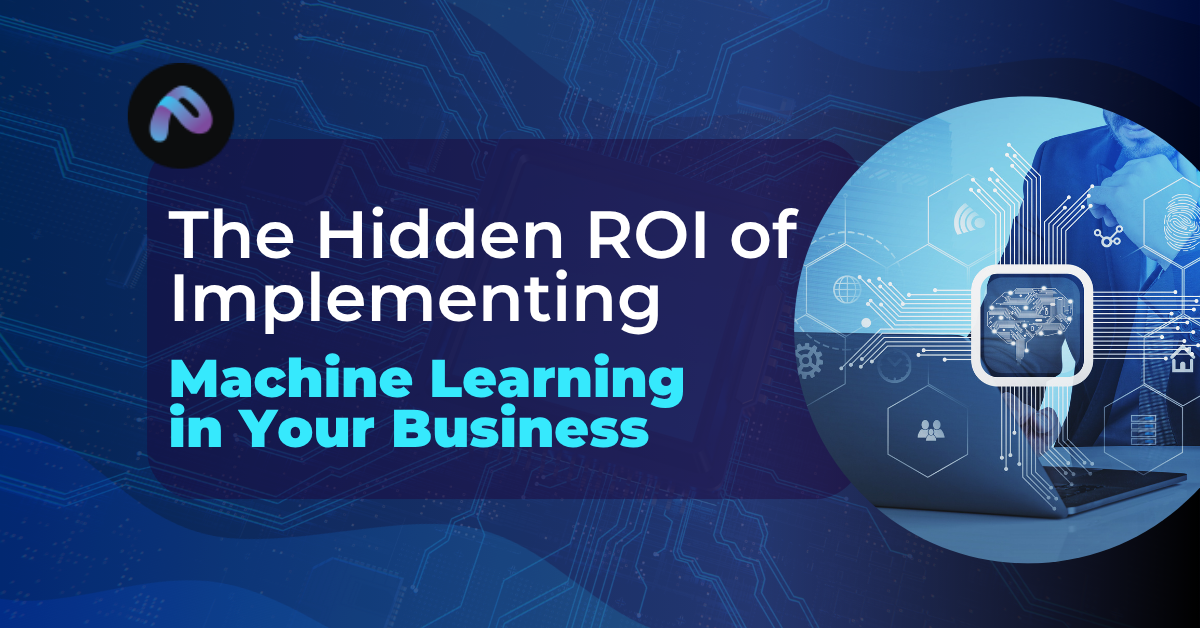In today’s fast evolving business landscape, organizations are increasingly turning to advanced technologies to gain a competitive edge. One such transformative technology is Machine Learning (ML), which offers businesses the ability to analyze data, optimize processes and make predictions with a degree of accuracy that would be impossible using traditional methods. While the benefits of machine learning are often discussed in terms of technology, data and automation, its return on investment (ROI) is a more nuanced concept that can reveal the hidden potential of ML implementation in business.
In this article, we will explore the hidden ROI of implementing machine learning in your business, focusing on areas where the impact of ML is often understated, but highly significant. From improving operational efficiency to enhancing customer experiences, ML offers tangible value in multiple facets of business operations.

1. Automating Routine Tasks for Operational Efficiency
One of the most immediate and visible benefits of ML is its ability to automate repetitive and mundane tasks. In many businesses, employees spend a significant portion of their time on routine tasks such as data entry, processing and basic customer service. By automating these tasks using machine learning models, businesses can reduce human error, cut operational costs and free up valuable employee time.
Example:
In customer service, businesses can use chatbots powered by machine learning algorithms to handle basic inquiries. These AI powered systems can provide quick responses, resolve issues and even guide customers through complex problems, all while providing 24/7 support. The automation of such tasks reduces the need for human intervention, allowing employees to focus on more strategic work, ultimately driving efficiency and cost savings.
2. Enhancing Decision Making with Predictive Analytics
Machine learning excels in analyzing vast amounts of data and extracting patterns that can be used to predict future outcomes. This predictive capability enables businesses to make informed decisions that are backed by data rather than intuition. From predicting customer behavior to forecasting sales trends, ML powered tools can help businesses make smarter decisions, thereby improving overall ROI.
Example:
predictive maintenance in manufacturing can reduce downtime by predicting when a machine is likely to fail, allowing businesses to address issues proactively. Similarly, retailers can use ML to forecast demand, optimize inventory levels and ensure that they meet customer needs without overstocking or understocking products.
3. Personalizing Customer Experiences
Customers today expect personalized experiences and businesses that can meet this expectation are more likely to build strong, long lasting relationships. Machine learning can analyze customer data such as browsing behavior, purchase history, and social media activity to identify patterns and preferences. This data is then used to deliver personalized recommendations, offers and marketing messages tailored to individual customers.
Example:
Netflix, Amazon, and Spotify are prime examples of companies that have successfully implemented ML to personalize their services. By using recommendation algorithms, these companies keep their customers engaged, increasing retention rates and driving higher sales or subscription revenue. The hidden ROI in this case lies in customer loyalty, repeat business and a higher lifetime value per customer.
4. Enhancing Fraud Detection and Security
In sectors such as finance and e-commerce, fraud prevention is critical to maintaining the integrity of transactions and safeguarding company assets. Machine learning is increasingly being used for fraud detection by identifying suspicious behavior patterns in real time. ML models can detect anomalies and flag potentially fraudulent activity, reducing the chances of financial loss.
Example:
In banking, credit card companies and payment platforms use machine learning to analyze spending patterns and detect fraud.If a customer uses their card in an unusual location or for an uncharacteristic purchase, the system can trigger an alert or temporarily block the transaction.This increases security, reduces fraud related losses and fosters customer trust, which ultimately leads to a stronger ROI.
5. Optimizing Marketing Campaigns
Marketing is one area where machine learning can offer an immediate and measurable ROI. Businesses leverage machine learning algorithms to optimize marketing campaigns and improve targeting, ensuring they spend resources efficiently. ML models can analyze customer behavior and predict the effectiveness of various marketing strategies, allowing businesses to maximize their marketing spend.
Example:
machine learning can assist in customer segmentation, where businesses can target different groups with tailored messaging, ultimately improving conversion rates. Moreover, ML driven tools can automate the A/B testing of marketing campaigns, identifying the most effective strategies and tactics with minimal manual effort.
6. Improving Product Development and Innovation
Machine learning is also a valuable asset in product development. By analyzing customer feedback, reviews, and usage patterns, ML can provide valuable insights into what features or functionalities customers want. This data driven approach to innovation allows businesses to prioritize product development efforts based on real demand rather than guesswork.
Example:
In the automotive industry, companies like Tesla utilize machine learning to improve autonomous driving systems by continuously analyzing vast amounts of data from real world driving conditions. By collecting this data and applying machine learning algorithms, Tesla continuously improves the system’s performance and safety, creating a competitive edge in the market.
7. Driving Revenue Growth with Dynamic Pricing
Machine learning can also be used to optimize pricing strategies, which is especially useful in industries like travel, e-commerce and hospitality. By analyzing market trends, competitor pricing, customer demand and other variables, businesses can adjust prices dynamically to maximize revenue.
Example:
Airlines often use dynamic pricing models powered by machine learning to adjust flight prices based on factors such as seat availability, time to departure and competitor prices. This approach maximizes revenue per booking and helps airlines remain competitive in a price sensitive market.
8. Reducing Customer Churn
Customer churn, or the loss of customers over time, is a common challenge for businesses across various sectors. Machine learning models can identify early warning signs of churn, such as declining engagement or negative sentiment, allowing businesses to take proactive measures to retain customers. By targeting high-risk customers with personalized offers, support, or incentives, businesses can therefore significantly reduce churn rates.
Example:
Subscription based businesses, such as SaaS companies, can use machine learning to track usage patterns and engagement levels. If a customer’s usage drops, the business can trigger automated retention strategies, such as personalized emails or special offers, to keep the customer engaged.
9. Improving Supply Chain and Inventory Management
Supply chain efficiency is crucial for businesses that rely on physical products.Moreover, machine learning can be used to optimize supply chain operations; consequently, products are delivered on time, costs are minimized, and inventory is accurately tracked.ML algorithms can predict demand fluctuations, helping businesses adjust production schedules, minimize stockouts and reduce waste.
Example:
Companies like Walmart and Amazon use machine learning for demand forecasting and inventory management. This ensures that they stock the right amount of inventory at the right time, which improves operational efficiency, reduces costs, and ultimately increases profitability.
10. Building Competitive Advantage
Finally, machine learning can be a powerful tool for building a long term competitive advantage. Businesses that invest in machine learning are more likely to stay ahead of competitors, adapt to changing market conditions, and deliver superior products or services. The hidden ROI here is the strategic advantage that machine learning offers, positioning a business as an industry leader.
Example:
In the tech industry, companies like Google and Microsoft have invested heavily in machine learning to build smarter software, improve services, and drive new innovations. This ongoing investment in ML helps them maintain their market dominance, attract top talent, and create products that outperform their competitors.
Conclusion: Unlocking the Hidden ROI
The ROI of machine learning is often not immediately apparent.However, the benefits of implementing ML in your business are profound and far-reaching.From operational efficiencies and cost savings to revenue growth and enhanced customer satisfaction, machine learning can unlock hidden value across every aspect of your business. By automating processes, optimizing decision making, personalizing customer experiences and driving innovation, ML helps businesses not only stay competitive but also thrive in an increasingly data driven world.While the upfront costs of implementing machine learning can be significant, the long-term ROI can easily outweigh these initial investments.Moreover, for businesses willing to embrace this technology, the hidden returns can be substantial; consequently, they may experience increased profits, higher customer loyalty, and sustained growth. The question is not whether businesses should implement machine learning, but rather, how quickly they can adopt it to unlock these hidden opportunities.





